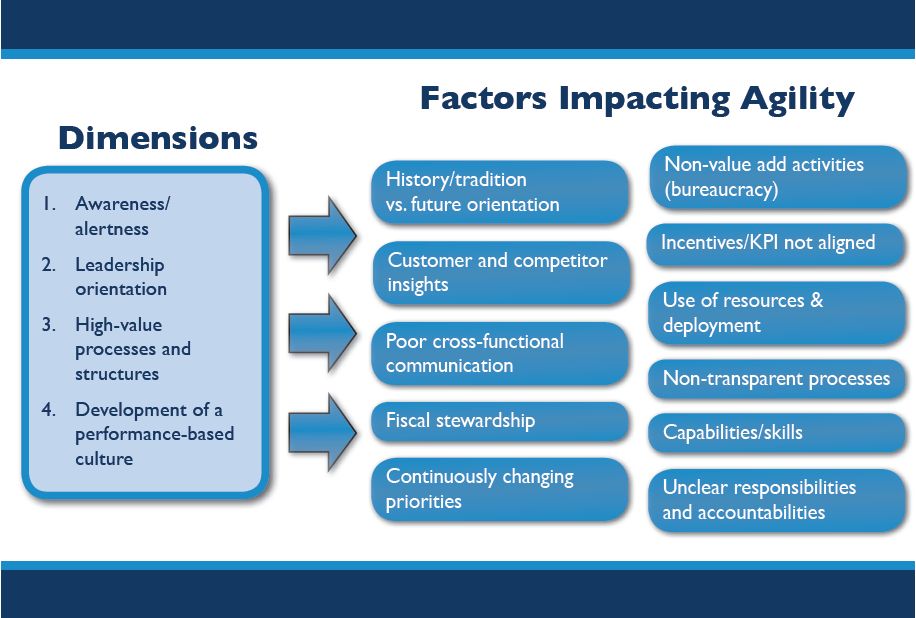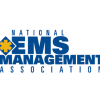|
Awareness and alertness
Most service leaders are aware of both customer and competitor issues but are not alert to changes until they become a full-blown crisis. As an example of this, we recently worked with a service that couldn’t understand why their volume was dropping. They didn’t become alert to changing customer needs until after a contract they had held for two decades was awarded to a competitor. It was a crippling blow.
Whether you are a public or private service, there are a number of questions related to your customers and competitors which, when answered honestly, can indicate whether you have moved beyond simple awareness to becoming alert to your future. In other words, the answers can be positive indicators of agility. The three central questions are:
- Have you personally interacted with top executives of your three largest customers in the past 30 days?
- What events, if they occurred, would pose a threat to your customers’ view and support of your organization?
- What are the indicators routinely used to track your competitors’ activities in the market?
In our client’s case, management came to realize that it had been almost a year since they’d had any significant social interaction with the executives of their top customers. Remember, customers buy from “friends,” and they will give a friend an early warning when there is a problem or potential problem. In this case, management had not anticipated what might undermine their relationship with key customers or how to mitigate the impact. This inattention made the relationship more fragile.
The organization had seen more (and newer) units from the competing service at local hospitals, but they didn’t understand the significance. Being alert to early signs of change is difficult: The signs are soft when you first notice them and may seem to be only an impression. But pay attention to your intuition. Assimilate multiple sources of information to help identify an early trend that can be acted on to preserve and enhance an existing customer relationship or a trend that tips off a competitor’s strategy.
Leadership orientation
When we first became customer advocates and began teaching customer service, a senior supervisor at one company bristled and told me, “We’re a 911/emergency-only service. We don’t have customers—we have victims.” Over the years, I’ve often chuckled and realized he was right: Anyone with this attitude victimizes customers!
Expanded and improved customer and caregiver relationships are essential as the pace of change increases. There are seven key customer groups that you must pay attention to: patients, family members, bystanders, co-responders, clinical staff at the hospital, administrative personnel at facilities and, last but not least, our own caregivers. Leaders have to be oriented to discovering and acting on changes in expectations within each group to ensure that their organization is agile. Likewise, agile leaders are savvy about competitors’ actions and anticipate potential strategies and tactics.
High-value processes and structures
“We mail comment cards to all of our customers, and those returned have an 88 percent positive rating!” The EMS chief who said this went on to admit that her agency doesn’t actually send cards to people who die or refuse care, or to facility personnel. Then she sheepishly confessed, “We don’t really do anything with the cards except tally them up once a year.” Agile organizations, on the other hand, take relationships seriously and use processes and systems to make sure caregivers and administrators take action.
Most emergency services accept the accelerating pace of clinical technology. But when it comes to management technology, there are fewer early adopters. A variety of next-gen processes are available, but few have been widely implemented by ground EMS providers. One of the most interesting and cost-effective of these processes, and one that helps EMS improve customer insights and agility, is called RSQ911 Solutions, developed by Bill Gerard, M.D., an EMS medical director.
RSQ911 was recently implemented by Air-Methods at more than 100 air medical program sites. Through a web-based survey system, quick e-mail surveys are used to inventory the perceptions of patients and other customer groups. RSQ911 provides metrics and insights outlining opportunities for improvement and areas of success to recognize and celebrate. It integrates with EPCR software and provides benchmark data for other services using the system. One of the most innovative features is the leadership e-mail alert system, which prompts immediate customer problem resolution.
Development of a performance-based culture
Technology can help you stay alert to changing customer perspectives, but culture is king when it comes to organizational agility. It’s more important than technology; it’s more important than data. In fact, culture wins hands-down.
A performance-based culture compels caregivers to go above and beyond when it comes to customer service. Both public- and private-sector examples of performance-based EMS customer service cultures exist: Phoenix Fire and Acadian Ambulance are both known for outrageously positive customer service. What makes these two organizations legendary? Their cultures support individuals at all levels doing the right thing. Performance and customer service are part of the fabric of the organizations. They expect it, measure it and hold members accountable to it.
Howard Shultz, CEO of Starbucks, sums up the customer service requirements for leaders in a performance-based culture this way: “Care more than others think wise. Risk more than others think safe. Dream more than others think practical. Expect more than others think possible.” Starbucks uses its deep customer and competitor insights to make game-changing decisions, and their success at building a highly successful coffee company with sales of $9.8 billion proves it. They are also, not coincidentally, among the most agile organizations on earth.
Stay tuned next month, when we’ll talk about cross-functional communication. This topic will be a featured presentation at the Pinnacle EMS Leadership Forum, being held from July 16–20 in Colorado Springs. For information, visit pinnacle-ems.com.












